👨🏫 Outline
Formulas for this lecture can be found in my paper formula sheets and online formula sheet.
Overview
- Introduction: Stocks vs. Bonds
- Long-run Returns vs. Short-run Volatility
- The Primary Market
- Finance Jargon: Shares Outstanding, Float, etc.
- Market Cap Categories
- The IPO Process
- The Secondary Market
- Types of Exchanges
Intro to Stocks
Are Dividends a Thing of the Past?
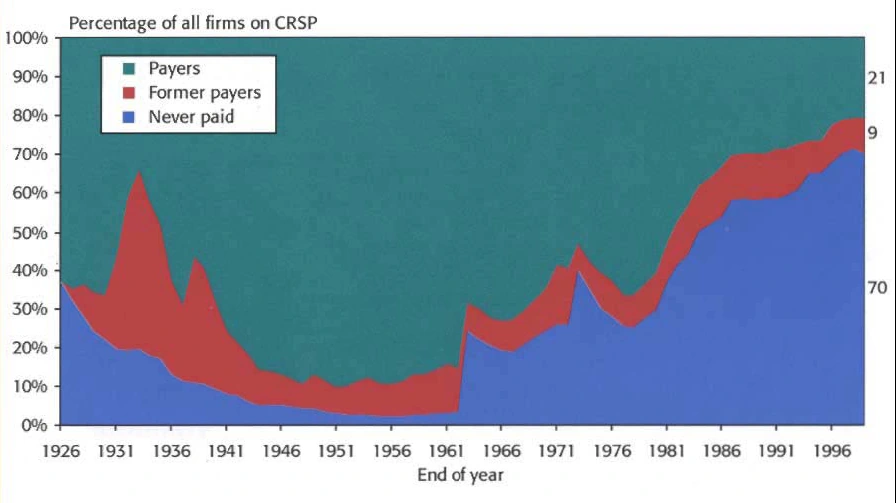
Stocks vs. Bonds
| Bonds | Stocks |
|---|---|
| IOU | Ownership share |
| Coupon payment | Dividend |
| Position in event of liquidation | Residual claimant |
Long-term Returns on Stocks vs. Bonds
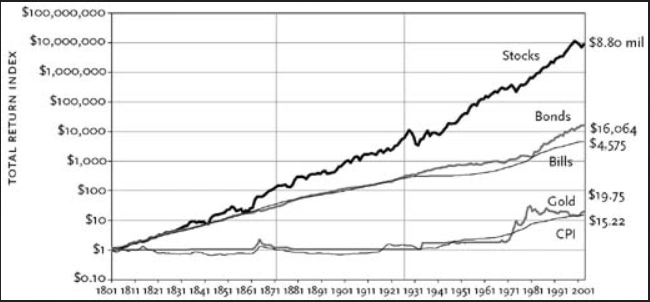
S&P 500 Index Over the Past Five Years
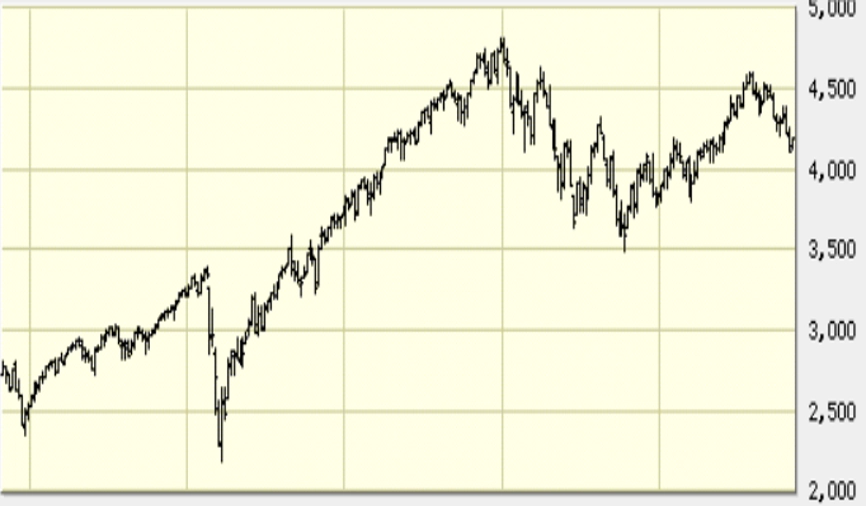
Share Types: Authorized, Outstanding, Float, etc.
- Authorized shares
Authorized shares = issued shares + unissued shares
Issued shares = shares outstanding + treasury stock
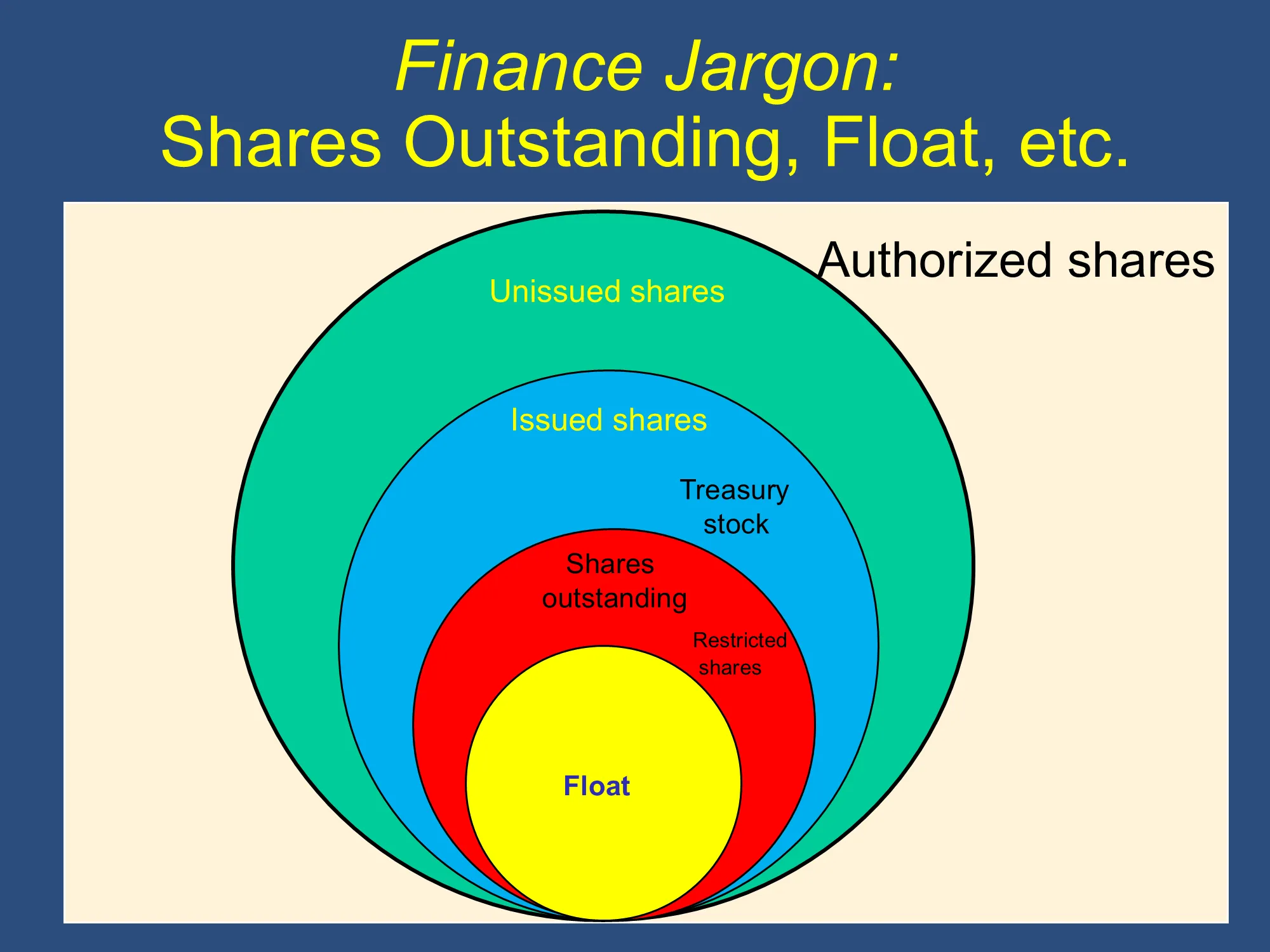
Share Types Example
Before Firm Buys Back 100 Million Shares
Effect of buying back shares
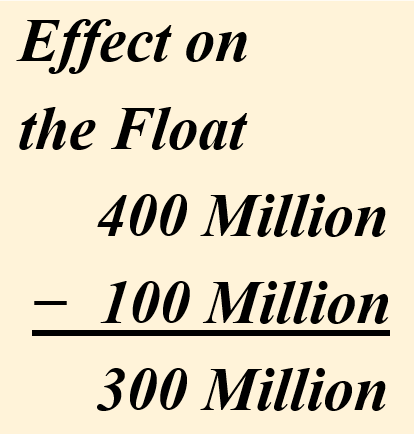 | 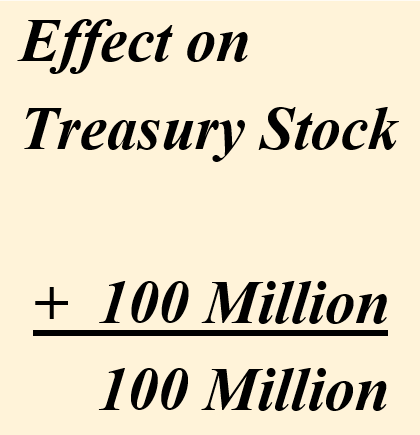 | 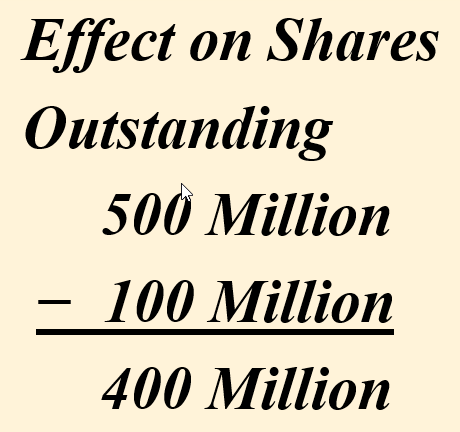 |
After Firm Buys Back 100 Million Shares
Market Capitalization
Example:
- 1 Billion shares outstanding
- Share price = $10
Meta (Facebook) Share Statistics

On 10/31/23
- 9.1 billion Class A and Class B shares authorized
- 2.69 billion shares outstanding
- 45 million restricted shares
- 2.24 billion share float
Market Cap Categories
| Mega Cap |
|
| Large Cap |
|
| Mid Cap |
|
| Small Cap |
|
| Micro Cap |
|
Initial Public Offerings (Primary Market)
Benefits vs. Costs of Going Public
-
Benefits
- Increased access to capital markets
- Founders can “cash in”
-
Costs
- Loss of control (Example: Jobs and Wozniak at Apple)
- Exposure of sensitive information (SOX)
- Investor relations efforts
The Initial Public Offering
- Initial Public Offering (IPO)
- First offering of stock to Public
- Underwriting
- Role of the syndicate
Top Underwriters, 2021 (by value of deals)
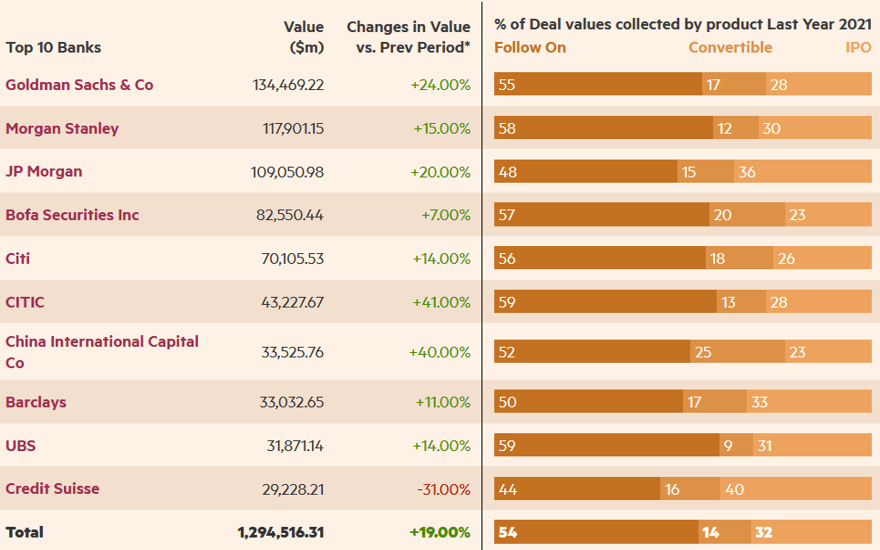
Top Underwriters, 2021 (by Fees Collected)
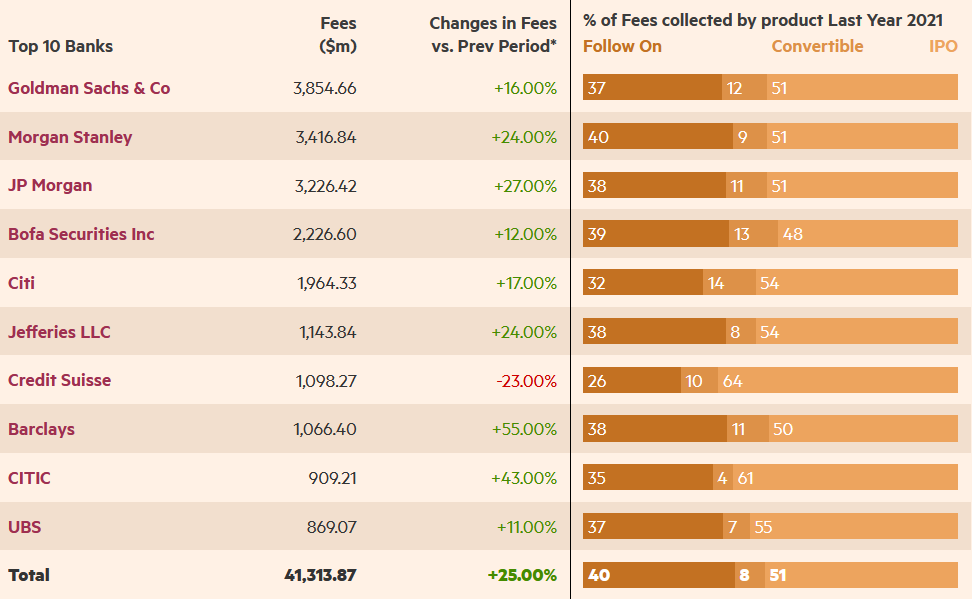
How Do Firms Choose an Underwriter
- The contract
- The spread
- The Rep
Steps in an IPO: The Role of the Lead Underwriter
- Valuing the company
- Determining the offering price of shares
- “Building the book” via road shows
- Filing the necessary paperwork
- Filing the prospectus
Types of Underwriting Contracts
- Firm commitment contract: issuance to distribution and sale
- Safest but most expensive for the issuer
- Underwriter’s profit is the “spread”
- Best efforts contract
- All-or-none contract
Costs Involved in an IPO
- Legal and administrative costs
- Spread (or underwriting commission)
- Underpricing
Spreads on Selected Issues
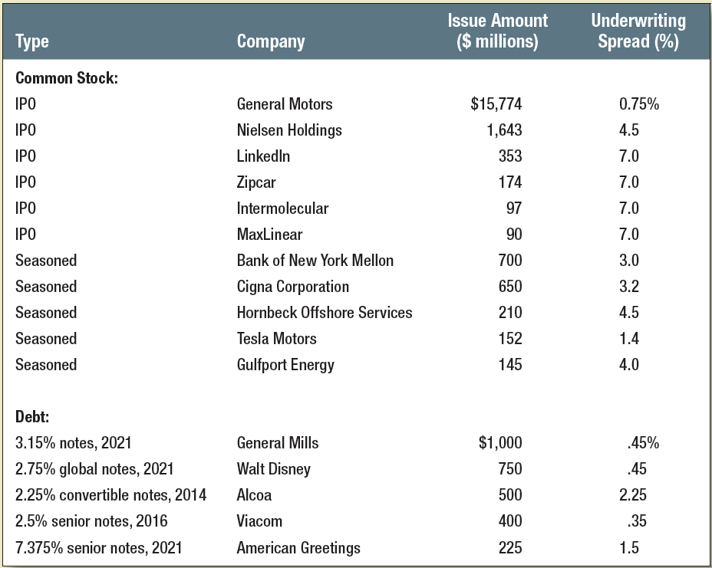
Costs of Raising Capital
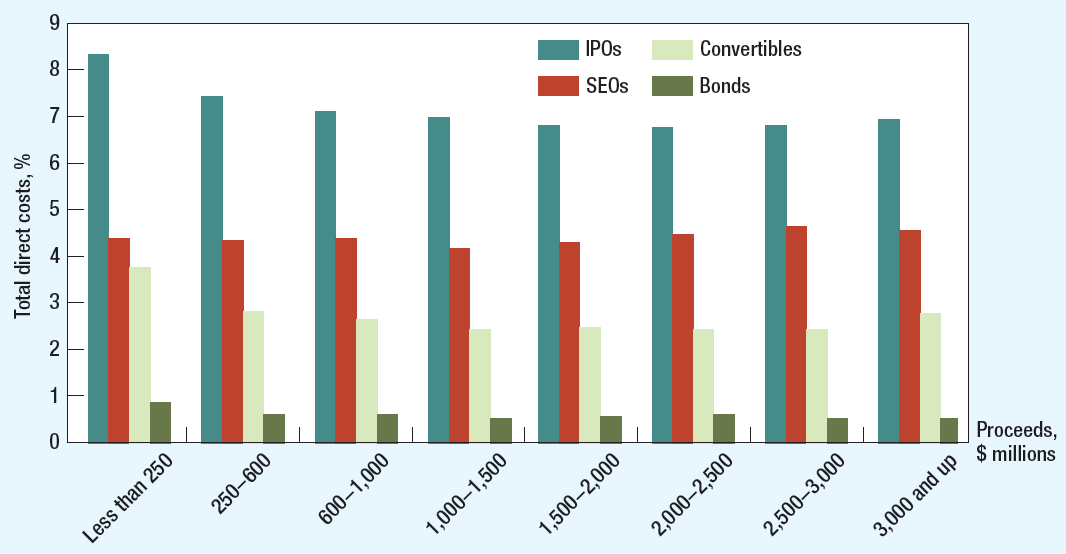
Exchanges (Secondary Market)
Different Types of Markets
- Direct search
- Buyers and sellers seek each other
- Brokered markets
- Brokers search out buyers and sellers
- Dealer markets
- Dealers have inventories of assets from which they buy and sell
- Auction markets
- Traders converge at one place to trade
New York Stock Exchange (NYSE)
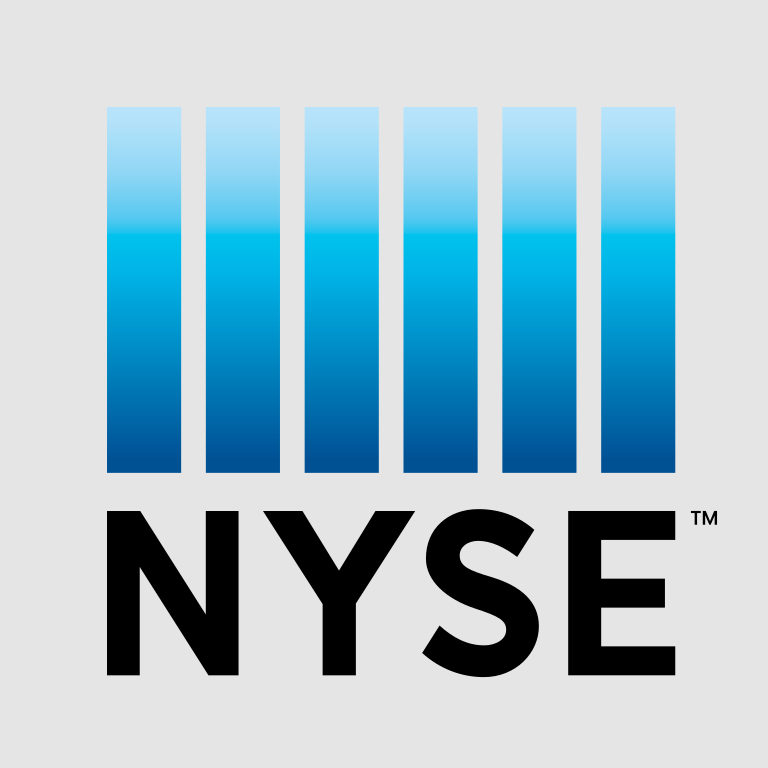
- Acquired by Intercontinental Exchange (ICE) in 2013
- Around 2,800 companies listed
- “Open outcry” auction market, which is quickly - evolving into an electronic market
- “Hybrid market”—orders can be handled electronically, - or by floor brokers (as of January 24, 2007) 80%+ of - trades now handled electronically
- Diminished role of specialists
- $24T in total market capitalization
- Avg. daily volume 3.2B shares
- Formerly: 1,366 “seats”, conferring the right to - trade on the exchange
- Now: NYSE sells 1-year licenses to trade on the - exchange
- Lists the largest, most established companies: - ExxonMobil, General Electric, Wal-Mart, Disney
- The largest U.S. stock exchange as measured by the value of the stocks listed on the exchange
- Automatic electronic trading runs side-by-side with traditional broker/specialist system
- SuperDot : Electronic order-routing system
- DirectPlus: Fully automated execution for small orders
- Specialists: Handle large orders and maintain orderly trading
NASDAQ

Founded in 1971
Electronic exchange
Has always been “screen-based”
3,300 companies listed
$19T in total market capitalization
Avg. daily volume around 2B shares
High tech and innovative firms: Microsoft, Intel, Cisco, JetBlue
- Originally, NASDAQ was primarily a dealer market with a price quotation system
- Today, NASDAQ’s Market Center offers a sophisticated electronic trading platform with automatic trade execution
- Large orders may still be negotiated through brokers and dealers
Types of Exchanges
- Physical “Floor” Exchanges
- NYSE
- AMEX
- Electronic Exchanges
- NASDAQ
- London Stock Exchange
- Electronic Communication Networks (ECNs)
- A more automated, efficient kind of electronic exchange
- No market makers
Open Outcry: The Platform for 200 Years
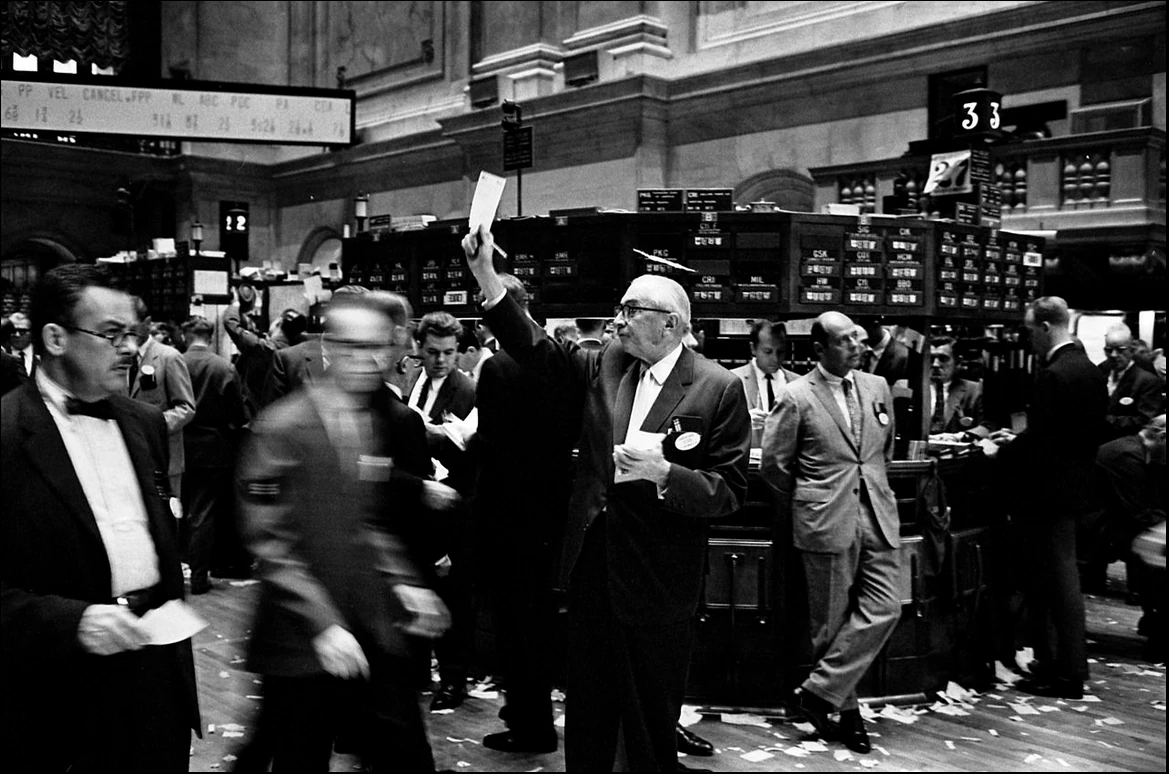
How Long Before It’s a Museum?
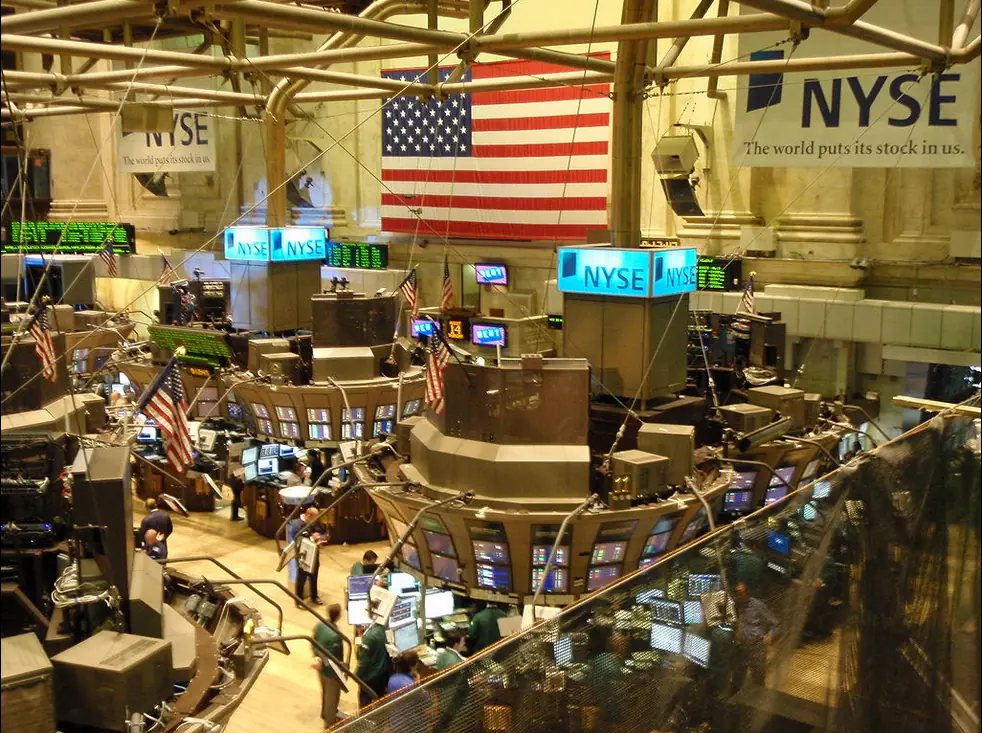
The New “Trading Floor”
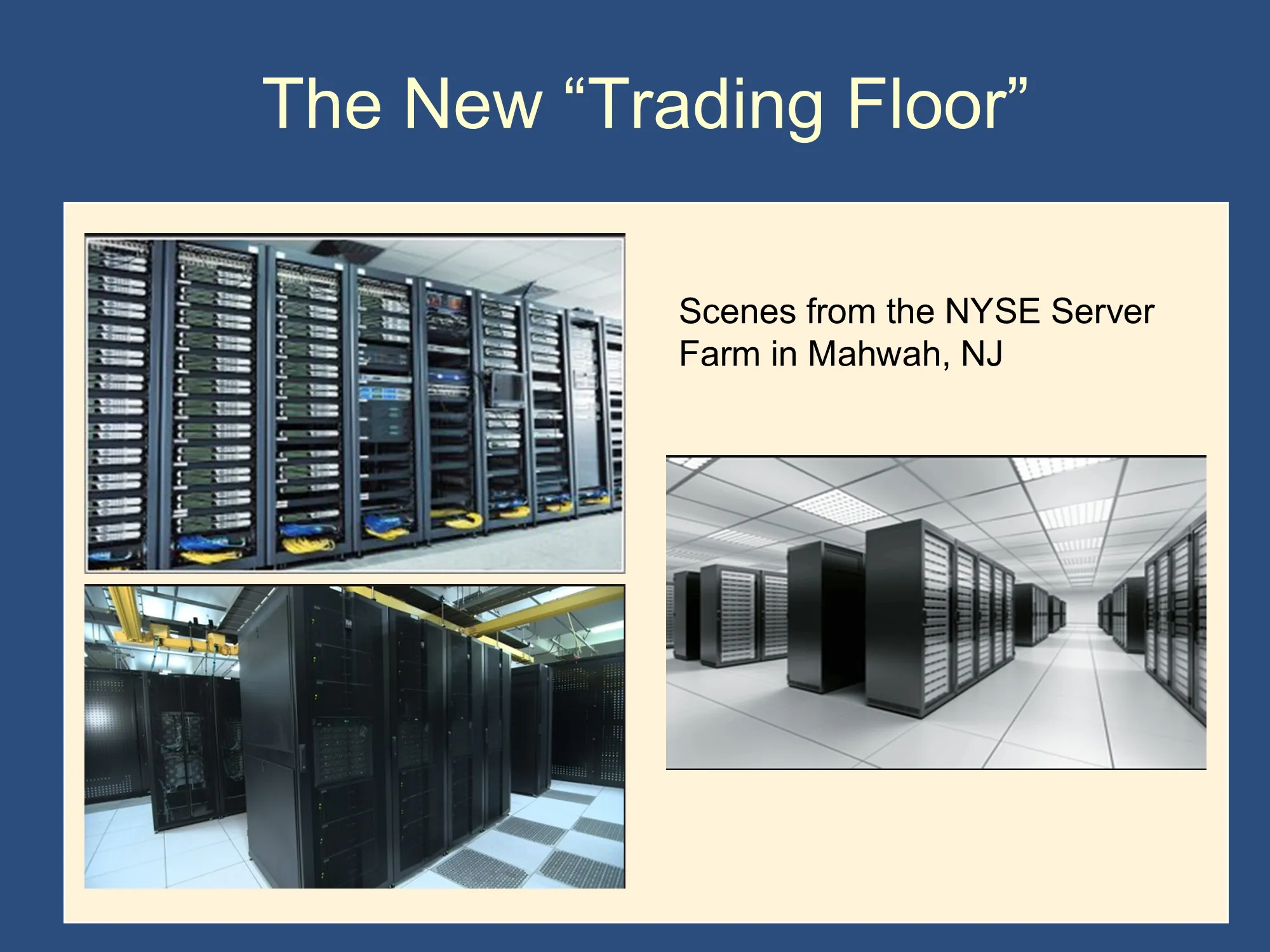
Feedback? Email rob.mgmte2000@gmail.com 📧. Be sure to mention the page you are responding to.